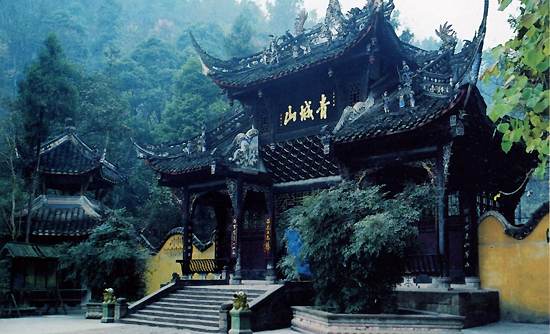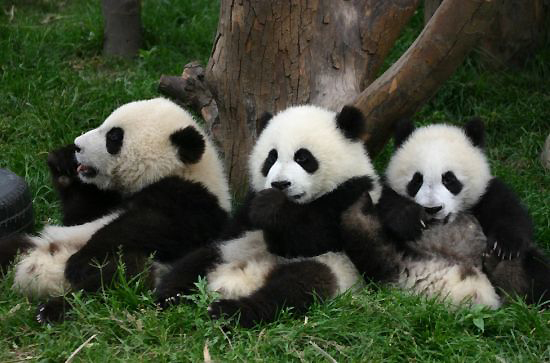The city features one of the most important centers of Taoism, the oldest existing irrigation project in the world and a large habitat for giant pandas. It is also well-known for its appetizing delicacies and slow pace of life.
Chengdu enjoys mild and moist weather for the most part of the year, but the best time to visit city is in March, April, May, June, September, October and November.
The following are the top 10 attractions in Chengdu, China.
Mount Qingcheng
Located to the southwest of Dujiangyan, Sichuan Province, Mount Qingcheng can claim to have some strong roots for China's Taoism. It is a famous historical mountain and one of the nation's major scenic areas for China tour deals.

The mountain faces the Chengdu Plain, at the back sporting the Minjiang River, and stretches out over an area of 200 square kilometers (20,000 hectares). It has 36 peaks, eight large and 72 small caves. Its main peak, Laoxiao Peak, rises up to 1,260 meters. Many temples can be found across the area.
In 2000, UNESCO included Mount Qingcheng, together with the Dujiangyan Irrigation System, on its World Heritage List.
Admission: 90 yuan (US$14.7)/person
Chengdu Research Base for Giant Panda Breeding
The Chengdu Research Base for Giant Panda Breeding (best attraction for China best tours) is an organization engaged in protecting, breeding and researching wildlife, in particular pandas. It was founded in 1987, when six giant pandas were rescued from the wild.

At the base, which covers an area of 106 hectares, the captive population of giant pandas has thus far increased to 113, making it the largest group in the world.
Several other wild and/or endangered species, such as the red panda and golden monkey, also live and breed here.
Admission: 58 yuan (US$9.48) / person
Dujiangyan Irrigation System
Dujiangyan is an irrigation infrastructure built by Governor Li Bing of the Qin State in 256 B.C., during China's Warring States Period (476-221 B.C.). It is situated on the Min River in Sichuan Province, near its capital Chengdu.
Dujiangyan is the only existing ancient hydro-power project, featuring diversions without a dam, in the world. It is widely regarded as the "ancestor" of the world's modern hydro-power culture, with a history dating back over 2,200 years. It also functions as a means to prevent floods and facilitate plain shipping. It is still in use today, irrigating over 5,300 square kilometers (530,000 hectares) of the region's land.

Dujiangyan is known as one of the "three great hydraulic engineering projects of the Qin Dynasty." The other two are the Zhengguo Canal in Shaanxi Province and the Lingqu Canal in Guangxi Province.
Dujiangyan is also one of China's better-known touristic spots for popular China tours, with many historic sites surrounding the area.
Admission: 90 yuan (US$14.7)/person
Jinsha Relics Museum
The Jinsha Relics are the relics of the Jinsha Villiage, Supo Town, northwestern Chengdu, dating back to the Shang (1600-1046 B.C.) and Zhou dynasties (1046-225B.C.). The place used to be the capital of the Ancient Shu Kingdom, a center of ancient civilization along the upper reaches of the Yangtze River during the 12th to 7th centuries B.C.
The 300,000-square-meters museum is used to preserve and display the Jinsha relics and other archaeological finds. A large number of ivory, gold and jade pieces are on show now. Retrieved in 2001, the relics are regarded "the most significant archaeological discovery of the 21st century in China."
Admission: 80 yuan (US$13.07) / person
Xiling Snow Mountain
Xiling Snow Mountain is a national scenic resort located 95 kilometers (59.03 miles) west of Chengdu, covering an area of 375 square kilometers (37,500 hectares). The main peak, Miaojiling, stands at 5,364 meters above sea level and is snowcapped all year round.
The mountain range is home to primeval forests, several varieties of flowers, rare bird species and a great number of endangered animal species and plants. It is an ideal place for skiing, sledging, grass skating, water skiing, hot-air balloon rides and hang gliding.
Admission: 30 yuan (US$4.9) / person (Mountain front)
120 yuan (US$19.6)/ person (Mountain back)
Learn more others via China travel guide.
No comments:
Post a Comment